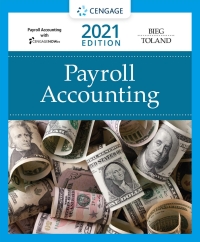Answered step by step
Verified Expert Solution
Question
1 Approved Answer
While the move into the steel business had proved relatively successful due to Magic s state - of - the - art machinery, the older
While the move into the steel business had proved relatively successful due to Magics stateoftheart machinery, the older timber equipment was showing its age and becoming more troublesome in particular, the large finisher. A report offered by the machines manufacturer suggested that the machine could be reinvigorated; however, Davidson wondered whether the company should instead invest in a new machine that would offer increased capability and reduced maintenance. Davidson believed this new machine would turn Magics fortunes around and return it to the revenue levels achieved a number of years ago. The new machine required a significant outlay, however, and it was this investment decision that Davidson had to consider.
Existing Machine
The existing machine was a Matrix The Matrix had been purchased secondhand when it was five years old. Davidson was particularly concerned with staff safety and was reluctant to allow other staff members to use this machine because this particular model was known to be very sensitive to the angle of the timber and would kick back severely if the lumber was not correctly positioned. Davidson had not experienced this particular problem since owning the machine.
A competitor had offered $ cash for the machine, an amount that represented its current book value. If Davidson opted to keep the machine, Magic would continue to claim depreciation of $ per year for each of the next five years, at which point the machine would be unserviceable and would be sold for $ as scrap. If Davidson elected to keep and repair the old machine, it would require $ to be spent immediately and $ in regular maintenance in each of the next five years. In Year the machine would require another investment of $ for a larger scheduled service.
New Machine
The new machine under consideration was a Delta A which offered an increase in capacity of per cent. This capacity was probably in excess of Magics needs, although the business would make some use of it Also, the new machine allowed the possibility of obtaining some custom work for a specialist woodcrafter.
The new machine cost $ and the tax office allowed straight line depreciation of per cent per annum. After five years, Magic would sell the Delta for $ Given that the company selling the machine to Magic operated in a very competitive market, it was willing to negotiate on the terms of a maintenance plan. The seller offered fixed pricing starting at $ in the first year, increasing by $ per year payable at year end To fund the purchase, Magics bank offered a per cent per annum loan to be repaid as interestonly payments for five years, with the full principal repayable at the end of the loan period.
Given the technological advancements of the Delta over the Matrix, Davidson expected that he could achieve significant savings in both labour and electricity costs. For labour, in the first year, Davidson forecasted a per cent cost reduction the existing rate was $ per hour based on a hour week in a week year. This labour saving would then increase by a fixed $ each year.
For electricity, in the first year, the saving was expected to be per cent as well. Electricity costs averaged
$ per hour, hours a day, seven days a week, in a week year. This electricity saving would then increase by a fixed $ each year.
THE DECISION
While Davidson felt enthusiastic about the upcoming possibilities for Magic, he had some concerns about the new level of debt, not just regarding the size of the loan, but also with respect to what that commitment meant for the business in terms of future opportunities. Davidson believed that if new business arose as a result of the increased capacity, the debt repayments could be comfortably met but the market conditions and the competitive nature of Bunnings concerned him. However, he also realized that if he opted to do nothing, the companys declining revenue trend of the last few years would most likely continue. Should Magic go ahead with the investment in the new machinery?
EXHIBIT : MAGIC REVENUE AND NET PROFIT
Actual Revenue and Net Profit for Magic in dollars:
Revenue
Net Profit
Forecast Revenue and Net Profit for Magic:
Revenue
Net Profit
Actual and Forecast Revenue, Net Profit, and Minimum Acceptable Profit for Magic: use as the cost of capital & as the company's tax rate.
Source: Created by case author based on company files
Step by Step Solution
There are 3 Steps involved in it
Step: 1

Get Instant Access to Expert-Tailored Solutions
See step-by-step solutions with expert insights and AI powered tools for academic success
Step: 2

Step: 3

Ace Your Homework with AI
Get the answers you need in no time with our AI-driven, step-by-step assistance
Get Started


